
Slide 1: What are fugitive emissions?
Fugitive emissions are air pollutants, mostly from industrial facilities, that escape into the air without passing through a controlled emission point, like a smokestack or chimney.

Slide 2: Effects of fugitive emissions.
Many different types of air pollutants can come from fugitive emissions. For example, petroleum refineries and other industrial facilities sometimes leak volatile organic compounds (VOCs) into the air. These VOCs contribute to the formation of ground-level ozone, the primary component of smog. Some fugitive emissions might contain greenhouse gases, which are contributing to changes in the Earth’s climate.
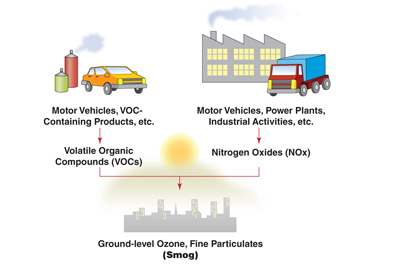
Slide 3: Smog.
Ground-level ozone has been linked to a variety of health problems and detrimental effects on the natural environment. It's possible that warming temperatures associated with climate change could increase concentrations of ground-level ozone.
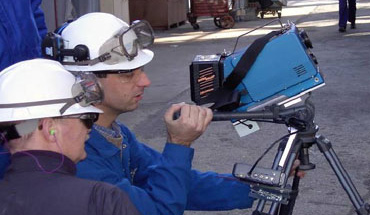
Slide 4: Remotely sensing leaks.
Leak detection using remote sensing has recently been
accepted as an alternative to traditional methods. It involves using on-the-ground as
well as airborne infrared cameras.
Want to learn more about this? Click on the interview with Myron Knudson, Remote
Sensing Action Team member and Senior Policy Advisor for the EPA, Region 6.

Slide 5: Visible and invisible energy.
The basic unit of electromagnetic energy is the photon,
and it travels in waves of varying lengths and frequencies. Radiant energy can be
organized along an electromagnetic spectrum based on these characteristics. As you
can see, the radiation visible to humans is relatively small when compared with the
entire spectrum. Infrared (IR) radiation travels in longer wavelengths than visible
radiation, which means the human eye can't detect it.
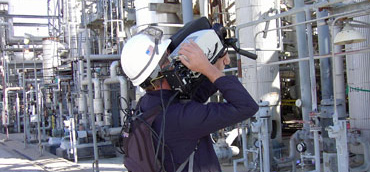
Slide 6: Infrared Cameras.
Although IR light is invisible to us, we can still detect it using
satellites and cameras. Different gases absorb different wavelengths of IR radiation,
and cameras can be designed to detect these specific wavelengths. That means these
cameras can actually help us "see" gases outside the human eye's range. A few of the
gases these cameras can detect are benzene (a common VOC), sulfur hexafluoride
and methane (both greenhouse gases), and carbon monoxide (an air pollutant that is
deadly at high concentrations).

Slide 7: What does the camera see?
Here is a regular photo. The vacuum vent leak can't be seen in this photo.
See next slide for comparison.
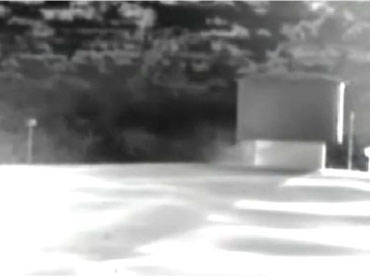
Slide 8: What does the camera see?
Here is IR still-shot of the same vent on top of a refinery storage tank.
But in the leak resembles black smoke coming from the left side of the vent.
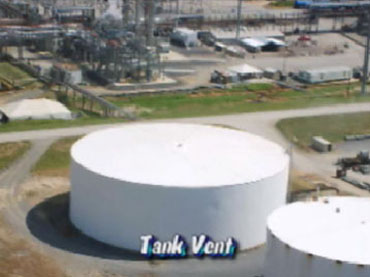
Slide 9: What does the camera see?
The naked eye wouldn’t be able to detect the leak coming from the roof vent of the large
white tank in the center of the photo using a regular camera.
See next slide for comparison.
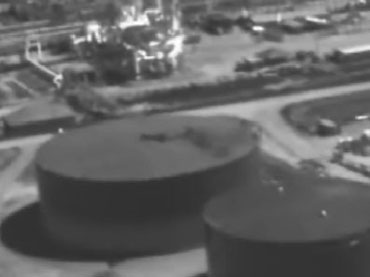
Slide 10: What does the camera see?
However, using the IR camera, a fugitive emission can be spotted escaping from the top of the tank.
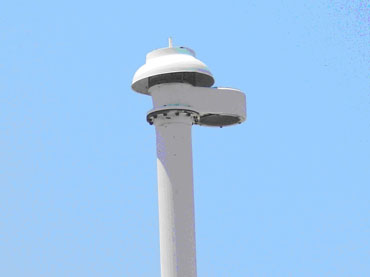
Slide 11: What does the camera see?
Looks like this popper valve is surrounded by nothing but blue sky!
Compare this photo with the next slide.
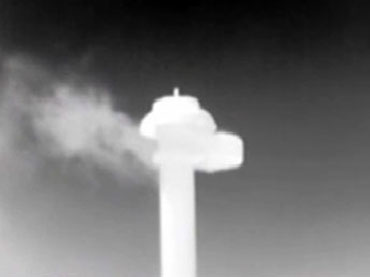
Slide 12: What does the camera see?
However, The IR camera reveals a different picture. To see what an IR video looks like, and to learn more about remote sensing applications in leak detection, click on the “Barge Emissions” video.